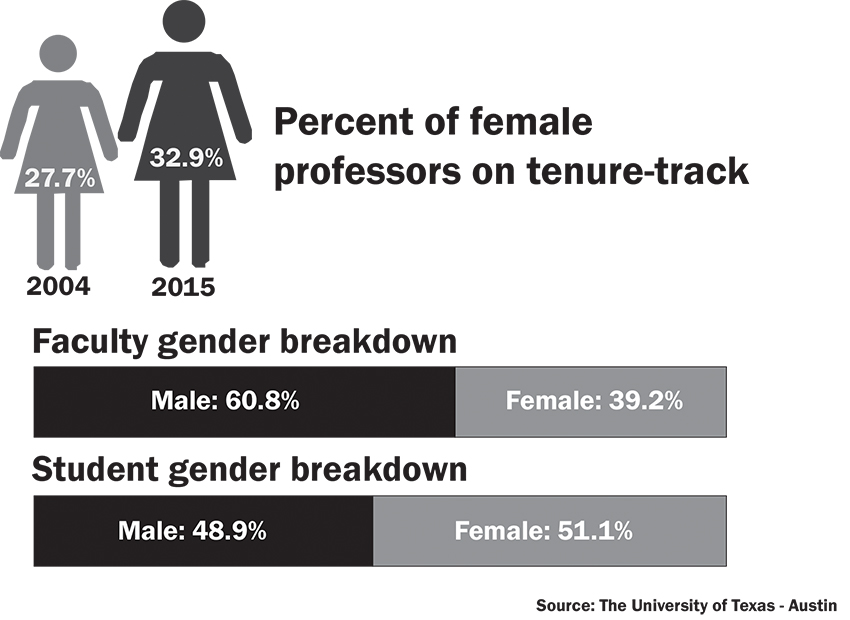A father and son are in a horrible car crash that kills the father. The son is rushed to the hospital, but just before he goes under the knife, the surgeon says, “I can’t operate — that boy is my son!”
Two Boston University psychology professors proposed this riddle to students as a social experiment investigating gender bias within the workplace. Of the 197 Boston University psychology students and 103 children from ages seven to 17 examined, only a small minority of subjects — roughly 15 percent in both groups — came up with the correct answer: the surgeon was the boy’s mother.
These findings cleverly demonstrate how gender biases are deeply ingrained in our culture. Such biases are problematic because they force us to make generalizations about what men and women can or cannot achieve in society. Thus, these generalizations fuel gender inequality in higher education.
However, UT’s University Faculty Gender Equity Council can combat this problem. The council began in 2014 as a university-wide initiative focused on promoting faculty gender equity. The council can tackle this challenge through timely execution of progressive policies that aim to continuously improve female faculty conditions. It won’t be easy, but it’s time to improve diversity among our campus’s faculty and staff.
Gender equity in faculty and staff has always been a priority for UT, but the issue has received special attention recently, as statistics from the University show a significantly higher percentage of male faculty members than females. There are 60.8 percent males and 39.2 percent females, which is a striking contrast to the current student gender breakdown of 48.9 percent males and 51.1 percent females.
The problem is that when students learn from a majority of male professors, they are not getting the unique insights and diversity of opinions that can come from female professors.
Chemical engineering sophomore Rajalakshmi Ranganathan said that having majority male professors can perpetuate stereotypes about her major.
“There should be more female professors [because] the main interaction that I have with engineers who are successful in their fields are professors,” Ranganathan said. “I think that having such a large disparity between the number of men and women who teach engineering really perpetuates the stereotype that engineering is more of a ‘male’ field.”
From 2004 to 2015, tenure and tenure-track female professors have increased campuswide from 27.7 percent to 32.9 percent, according to the council’s report on gender equity. However, this increase is simply not enough. The council should assert its power to provide solutions for the issue.
Some may say that simply increasing the number of female professors will not provide culture change. It might not have an immediate impact on our culture, but these female professors can inspire female students to attain the same level of success. With the correct execution, ongoing improvements and overall transparency, the council will succeed in providing diversity to our campus and eventually the world.
Kim is a journalism freshman from Austin. Follow her on Twitter @sunny_newsiee.





















